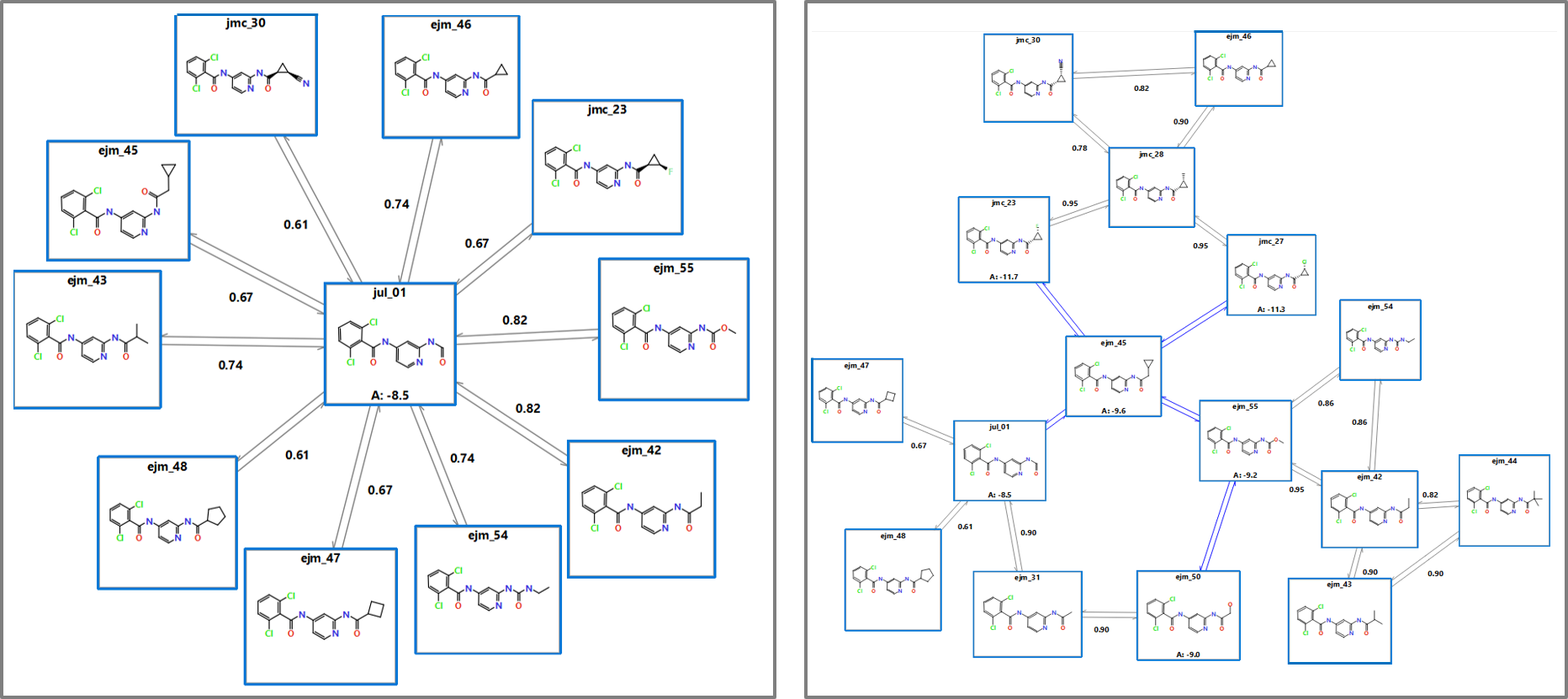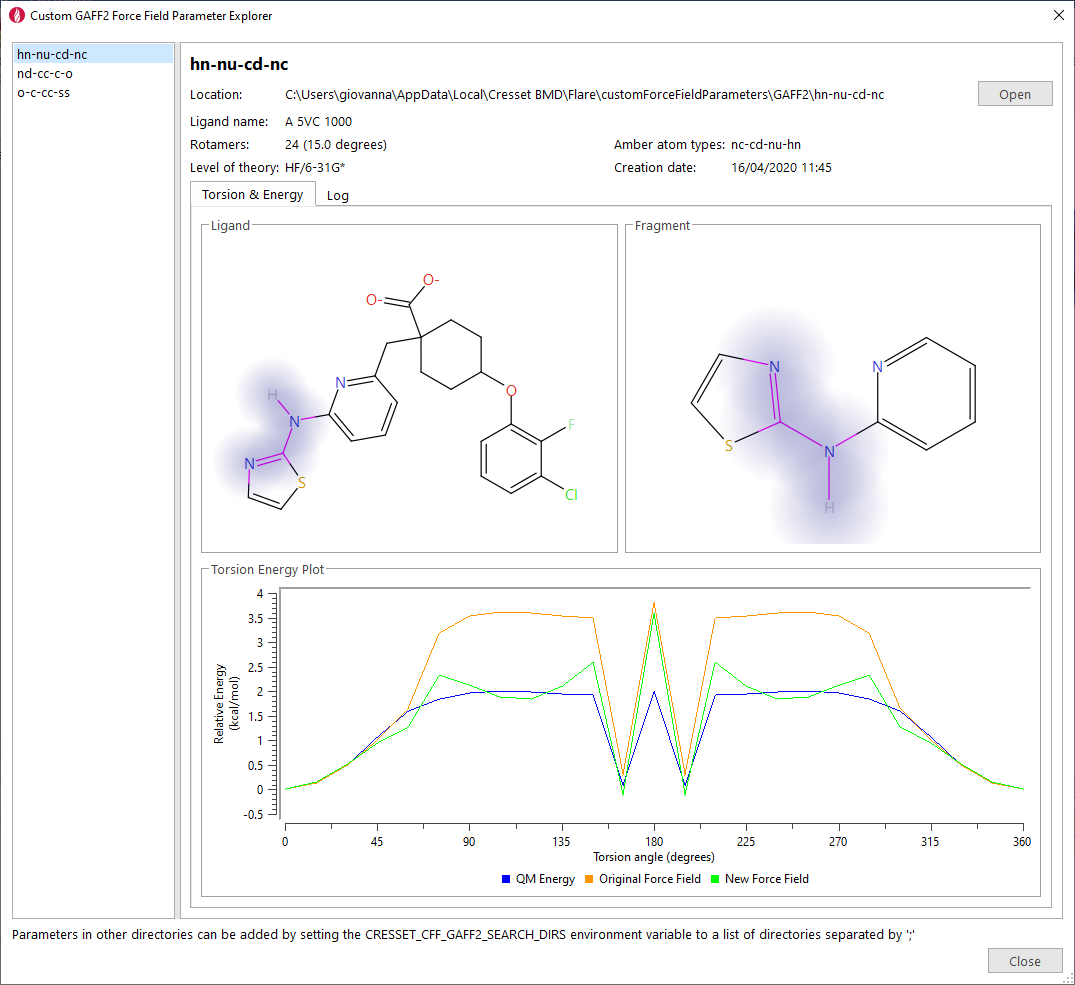With Flare™ V4 soon to be released, let’s have a quick look at what’s new in this version of our structure-based design platform.
Faster FEP calculations
Free Energy Perturbation (FEP) is a method for accurately predicting relative binding affinity changes within a congeneric ligand series. After successfully demonstrating (paper pending) that the implementation of FEP in Flare has a very good predictive ability on standard datasets, this release focuses on improving its calculation performance.
FEP calculations in Flare V4 are significantly faster thanks to an improved algorithm with a 20% increase in performance, and to the availability of new and improved designs of experiments.
‘Star graph’ networks (Figure 1 – left) are new in Flare V4. They are aimed at the optimization of a single lead compound. These networks involve a smaller number of links/transformations and are significantly faster than more connected networks (but they can be less precise, due to the lack of cycle error statistics).
Two-way, fully connected networks (Figure 1 – right) are the most precise type of experiment, including additional perturbations in order to form cycles between three (or more) ligands. These introduce some redundancy to the network, enabling more accurate error estimate for each link and through analysis of cycle closure errors. In Flare V4 these have been improved by an optimized use of available experimental activity values, leading to faster calculations and improved predictive ability.

Figure 1. Left: ‘Star-graph’ networks are ideal for the optimization of a single lead compound. Right: Two-way networks introduce some redundancy to the network, enabling more precise calculations.
For all types of network, a new ‘quick mode’ is available, which will calculate each link in the perturbation network in one direction only, leading to 50% faster calculations (but with less good estimates of error and outlier detection).
New and improved force fields for FEP and dynamics calculations
Quality of force field parameters for small molecule ligands is a key factor in the success of FEP and molecular dynamics calculations.
The choice of force fields available in Flare V4 has been significantly expanded with the addition of the Open Force Field. Its flexible implementation in Flare V4 makes it easy to upgrade to the latest available version from the Open FF Consortium.
In addition, a new wizard driven workflow (Figure 3) has been implemented to support the user-friendly development of small molecule custom parameters for AMBER/GAFF and AMBER/GAFF2, based on psi4 quantum mechanics calculations.

Figure 2. Development of custom AMBER/GAFF2 and AMBER/GAFF parameters is made simple by the Custom Force Field wizard.
Stay tuned
The release of Flare V4 is imminent. See flexible licensing options and request an evaluation.